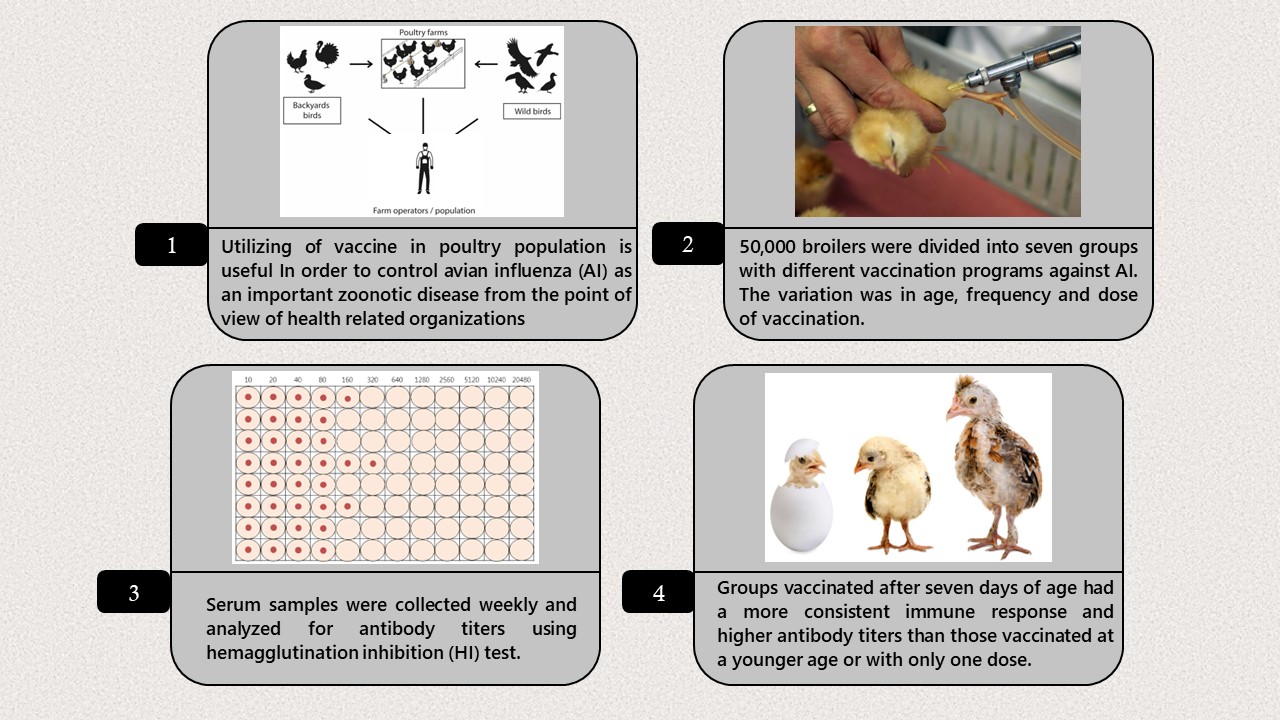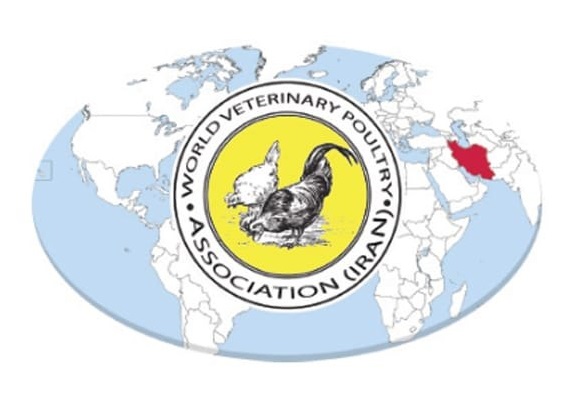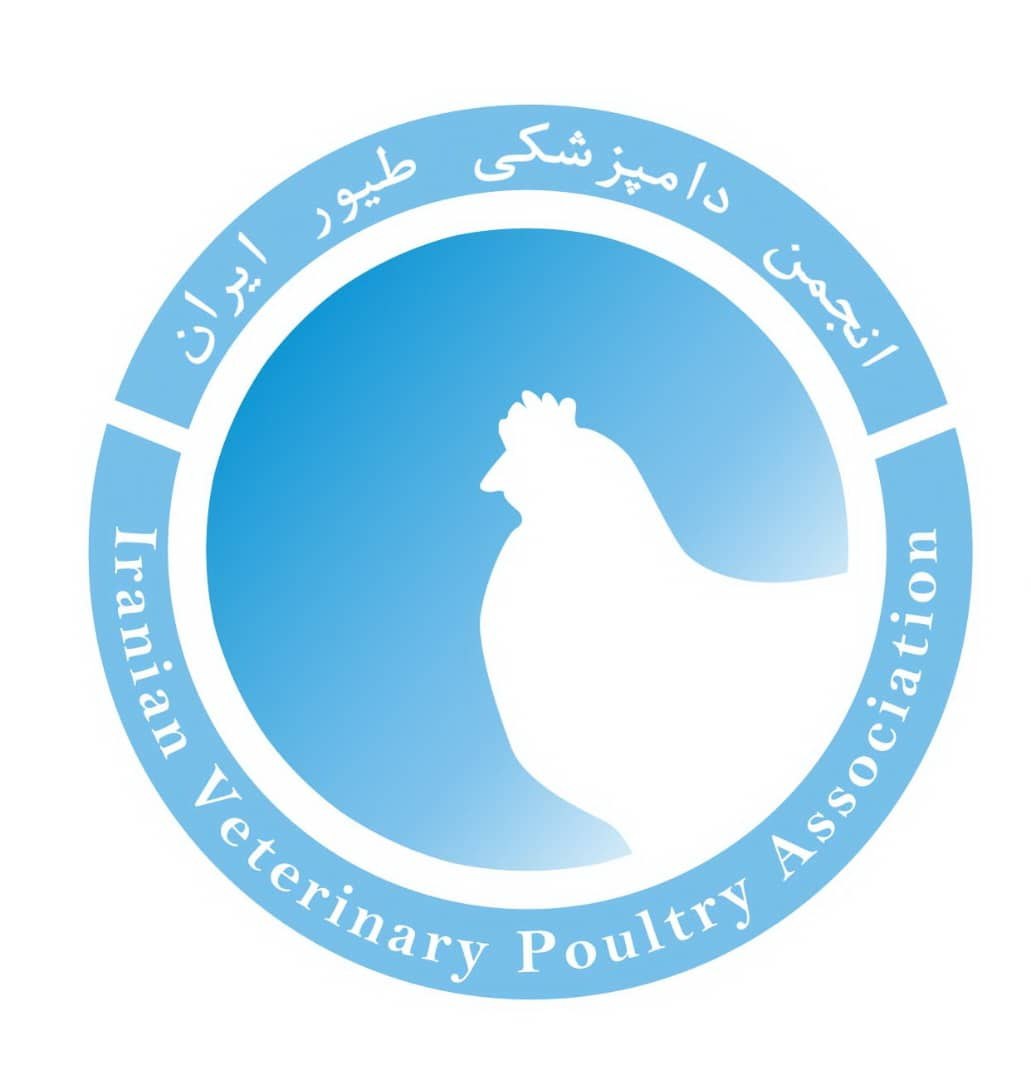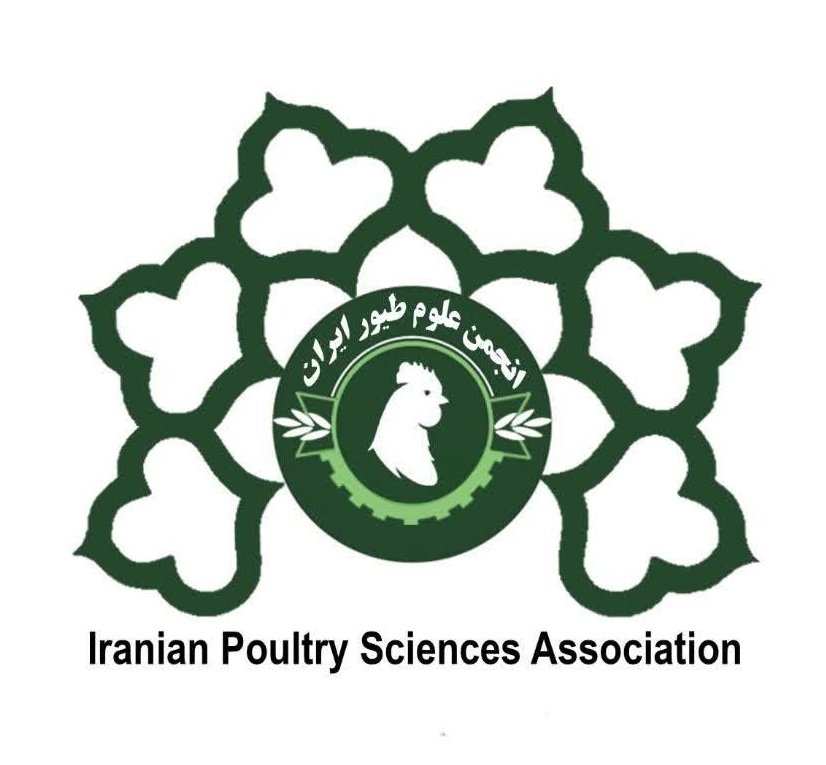Evaluation of inactivated vaccine's Antibody response to different H9N2 Vaccination programs with Hemagglutination Inhibition (HI) assay
Keywords:
Broiler, Hemagglutination Inhibition, H9N2, LPAI, Vaccination.Abstract
Influenza is a significant poultry disease that can also affect humans, making it a zoonosis. The World Health Organization (WHO) and Contagious Diseases Organization (CDO) have increasingly focused on this disease in recent years. The isolation of influenza, particularly H5N1 and H9N2 subtypes, has dramatically increased, posing a global epidemic threat and causing deaths in various communities, as well as substantial losses in poultry. In response, using inactivated avian influenza vaccines has become common in controlling the disease. A comprehensive study was conducted in broiler farms in Iran to address the importance of influenza control through vaccination. The study involved 50,000 broiler chicks divided into seven groups with different vaccination programs. The groups were vaccinated at different ages and received varying vaccine doses. Serum samples were collected weekly and analyzed for antibody titers using hemagglutination inhibition (HI). The results showed that the groups vaccinated after seven days of age had a more consistent immune response and higher antibody titers than those vaccinated at a younger age or with only one dose. Early vaccination before seven days of age did not effectively stimulate the desired antibody response or achieve expected titers for the H9N2 influenza virus. Therefore, vaccinating older chicks improved immunity and flock protection more effectively.
This study highlights the importance of vaccination strategies in controlling influenza in broiler farms. It provides valuable insights into the optimal timing and dosage of vaccines to enhance the immune response and protect against the H9N2 subtype. Implementing appropriate vaccination programs can contribute to mitigating the impact of influenza on poultry and reducing the risk of transmission to humans, ultimately safeguarding both animal and public health.
Downloads

Downloads
Published
Issue
Section
License

This work is licensed under a Creative Commons Attribution-NonCommercial 4.0 International License.

















